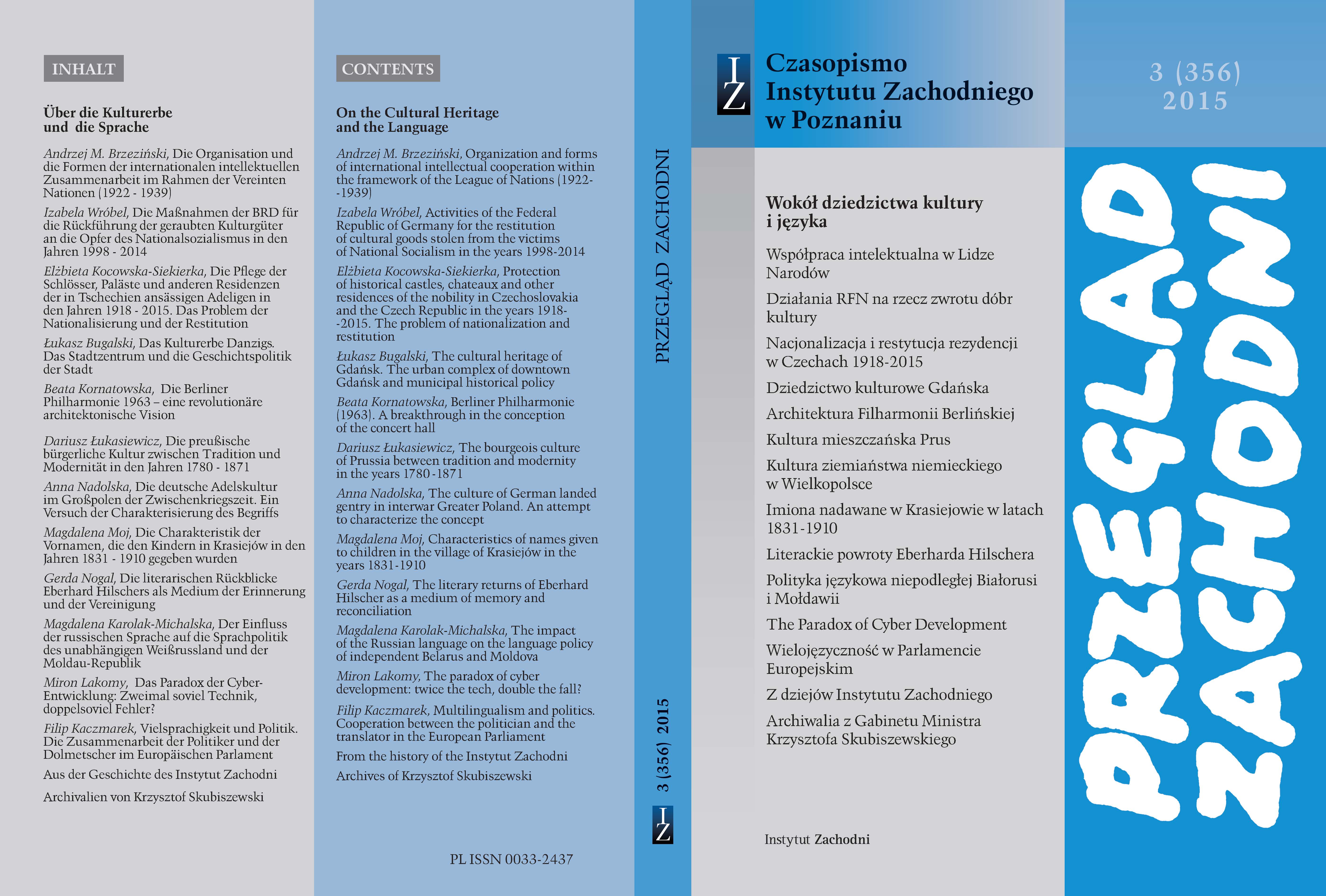Kultura mieszczańska Prus między tradycją a nowoczesnością w latach 1780-1871
The bourgeois culture of Prussia between tradition and modernity in the years 1780 -1871
Author(s): Dariusz ŁukasiewiczSubject(s): History, Cultural history
Published by: Instytut Zachodni im. Zygmunta Wojciechowskiego
Keywords: Prussia; culture; art; civilization; capitalism; bourgeoisie
Summary/Abstract: The classic interpretation of the history of Prussian culture is rightly associated with militarism and the spiked helmet. The Prussian “spirit of Potsdam” is commonly contrasted with the “spirit of Weimar”, a perspective long exploited in the literature of the subject. However, there are other noteworthy viewpoints. Already in the period of Enlightenment Berlin was a city of the free spirit of learning intellectuals and journalists. Publications on civilizational, social and economic reforms abounded. The 18th century was a period of departure from pre-modern mechanisms of financing art by court, church and municipal patronage. The emerging art market became governed by the demand and taste of the bourgeoisie and subsequently of the general public, although the middle class remained the leading group in this respect, imposing its standards on the lower social strata. Having become wealthy the bourgeoisie began to imitate aristocracy, among others in lavish and luxurious interior decoration, but with an excess characteristic of neophytes. The development of culture in 19th century Prussia was fuelled by enormous technical progress (e.g. the railway) and immense growth of institutions for the spreading of progress and culture (education system, healthcare, pension scheme). The advance of literacy and the press as well as readership (libraries and reading rooms) facilitated the creation of mass political parties and trade unions in addition to the participation of the masses in the political reality through the means of culture. The previous concentration on religious topics waned, giving way to secular themes publicized by serialized novels in popular press. Nevertheless, until the 20th century sacred art continued as a major influence among the lower classes.
Journal: Przegląd Zachodni
- Issue Year: 356/2015
- Issue No: 03
- Page Range: 113-138
- Page Count: 26
- Language: English, Polish

